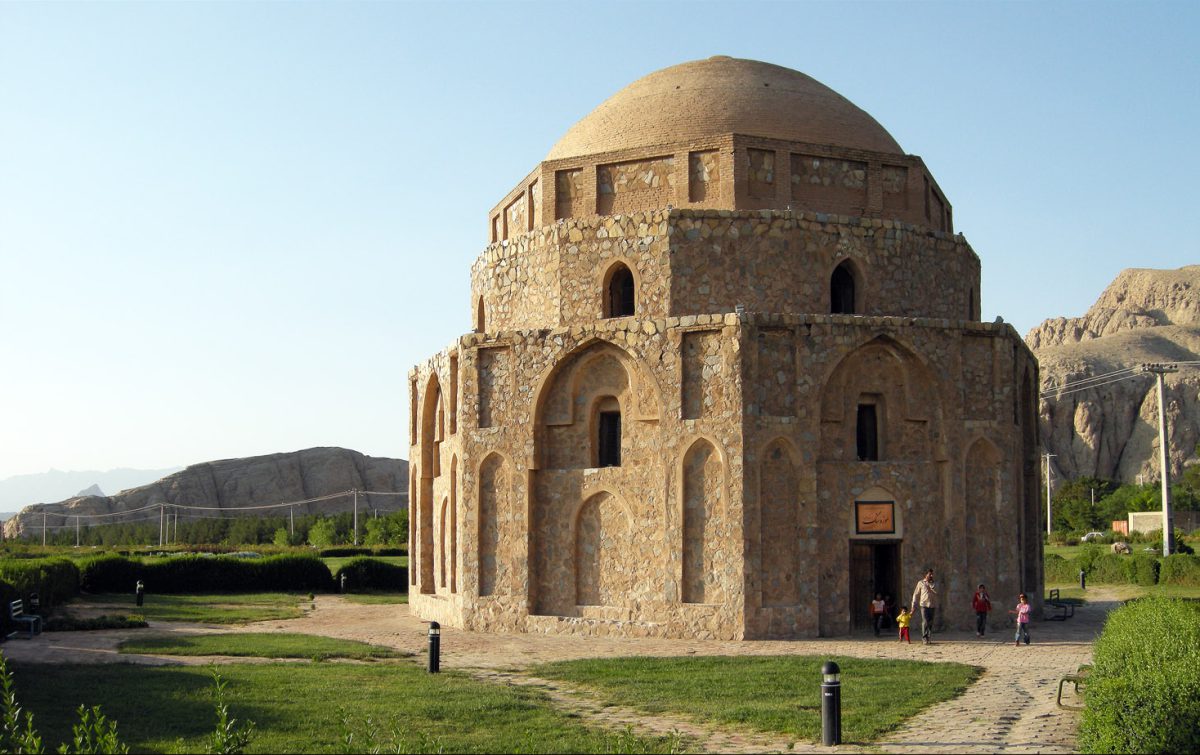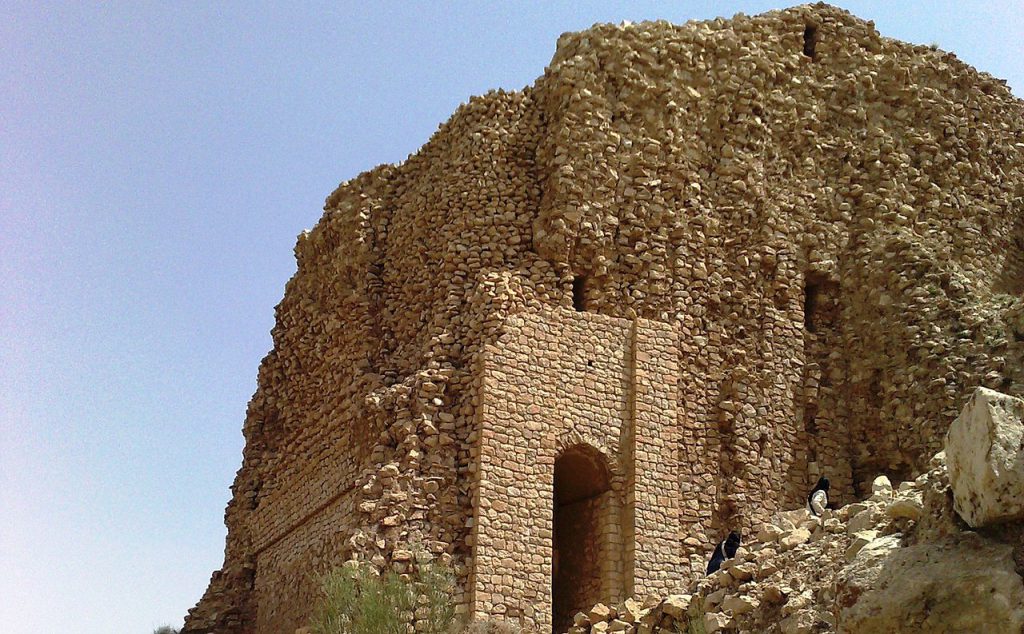Table of Contents
The Jabaliyeh Dome, a silent sentinel in the eastern reaches of Kerman, stands as a testament to a bygone era. Known by various names – Gabri Dome, Jabaliyeh Dome, or Gonbad-e Jabaliyeh – this octagonal marvel of stone and brick whispers tales of ancient rituals and forgotten faiths. Though its exact purpose remains shrouded in mystery, the dome’s architectural echoes of the Sassanid period hint at a rich history, perhaps as a Zoroastrian temple or a fire sanctuary. Its weathered walls and enigmatic presence invite contemplation, a silent invitation to unravel the secrets held within its stone heart.
The Jabaliyeh Dome, a beacon in the sands of time, stands as a poignant reminder of the enduring power of human ingenuity and the enduring legacy of ancient cultures. Its octagonal form, meticulously crafted from stone and brick, speaks of a time when craftsmanship was an art form, and architecture a language of faith and devotion. While its exact purpose may be lost to the mists of time, the dome’s architectural influences, echoing the grandeur of the Sassanid period, suggest a connection to the ancient Zoroastrian faith, perhaps a temple dedicated to the elements or a sanctuary for sacred flames.
The dome’s presence in the heart of Kerman, a region steeped in history and cultural richness, adds a layer of intrigue, inviting visitors to delve into the mysteries of its past and uncover the stories it holds within its weathered walls.
History of Jabaliyeh Dome
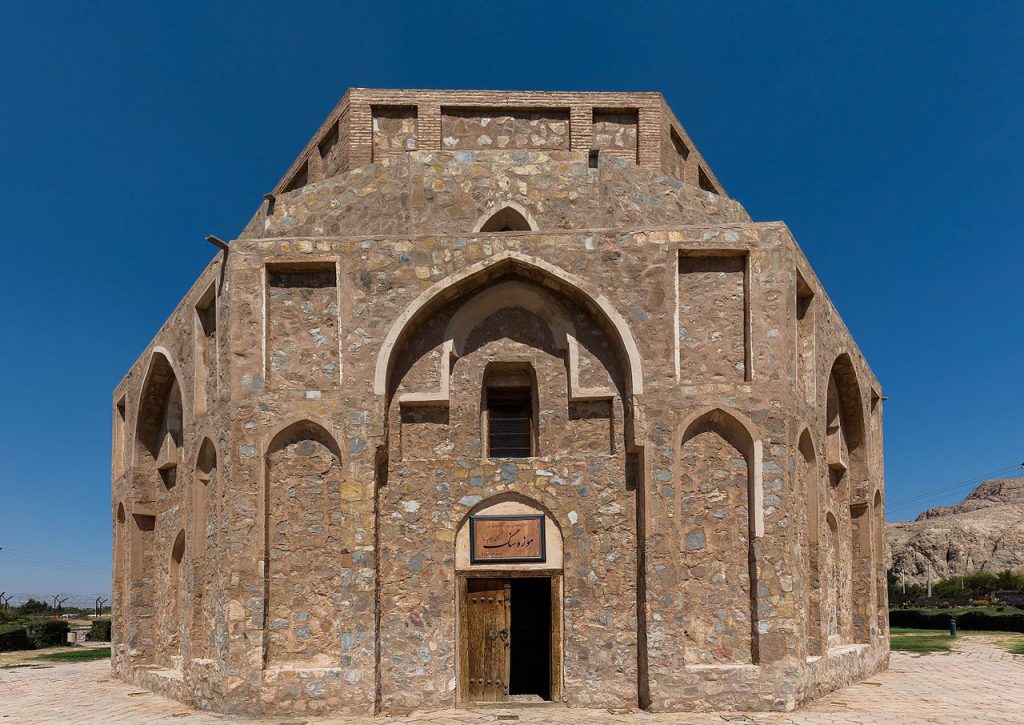
The Jabaliyeh Dome is a captivating structure that has intrigued historians and visitors alike. Located in eastern Kerman, this octagonal marvel stands approximately 18 meters tall, constructed primarily from stone and brick. Its architectural style reflects Sassanid influences, hinting at a rich historical narrative that remains largely speculative. While many theories abound regarding its purpose—ranging from a Zoroastrian fire temple to a burial site for a notable priest—the exact origins and functions of the dome are still cloaked in mystery. The absence of definitive historical records only adds to its allure, making it a focal point for those passionate about Iran’s ancient heritage.
Throughout its existence, the Jabaliyeh Dome has witnessed numerous events, surviving invasions and natural disasters that have shaped its history. Notably, during restoration efforts in 2004, several inscriptions were uncovered, including a significant Kufic script stone dating back to the Seljuk period. These discoveries not only enhance our understanding of the dome’s past but also underscore its importance as a cultural landmark. The structure, often referred to as the “Gabr Dome,” has been officially recognized as a national heritage site since 1937, further solidifying its status as a key attraction in Kerman. Visitors are drawn not only to its architectural beauty but also to the secrets that lie within its ancient walls, inviting exploration and contemplation of its enigmatic past.
Architecture of Jabaliyeh Dome
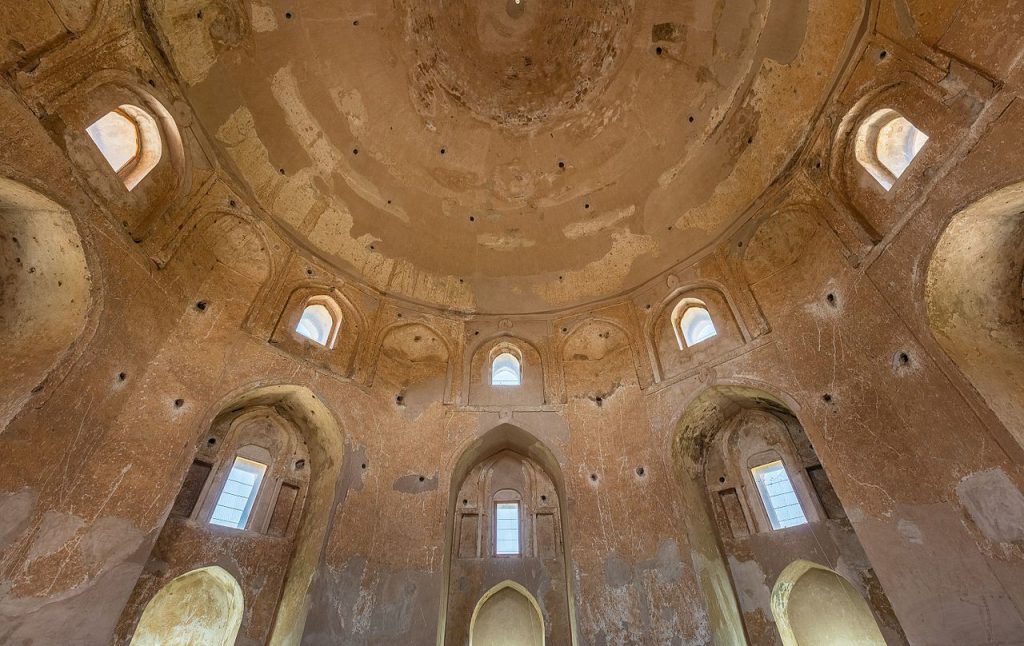
The Jabaliyeh Dome is a remarkable architectural wonder in the heart of Kerman, Iran. This octagonal structure, comprising three floors crowned by a rather flat dome, is a testament to the ingenuity of its builders. What sets the Jabaliyeh Dome apart is its construction material – stone, rather than the more common brick used in most structures of its era.
The dome’s origins can be traced back to a time predating the 2nd millennium AD, and it is believed to have served as a Zoroastrian building. The interior of the dome is completely empty, adding to the mystery surrounding its purpose and function. Over the centuries, the Jabaliyeh Dome has withstood numerous invasions and natural disasters, thanks to its sturdy stone construction and the use of innovative building techniques, such as the incorporation of ash, eggs, and camel milk instead of water.
In 1316, the Jabaliyeh Dome was officially recognized as a national monument in Iran. After undergoing restoration efforts in 1388, the site was transformed into the Jabalieh Treasury, where historical inscriptions and artifacts from various periods were discovered. These findings, including a significant Kufic script stone dating back to the Seljuk period, have shed light on the dome’s rich history and its role in Iran’s cultural heritage.
Inscriptions of Jabaliyeh Dome
Imagine stepping inside the Jabaliyeh Dome and encountering a silent testament to history. There, etched in the ancient Kufic script, lies the “Ashkan Abder Mosque Inscription,” a message whispered from centuries past. This inscription, carved onto a natural stone, speaks of a mosque that once stood proudly on the heights of Baft County. It’s a poignant reminder of the enduring presence of faith and community in this region, a story etched in stone for generations to come.
The Jabaliyeh Dome is a treasure trove of historical artifacts, each piece whispering a unique tale. Among them is a tombstone, discovered in 1998, its surface adorned with an inscription that speaks of both the sacred and the earthly. Verses from the Quran’s Al-Imran surah frame the central text, a testament to the interwoven threads of faith and human life. This dome is a museum of sorts, housing over 120 carved stones, each a fragment of a larger narrative. From a thousand-year-old stone from Rabor to the tombstone of Khwaja Atabak, from the Seljuk era, each stone carries the weight of history, offering a glimpse into the vibrant tapestry of Kerman’s past.
How to Get to Jabaliyeh Dome
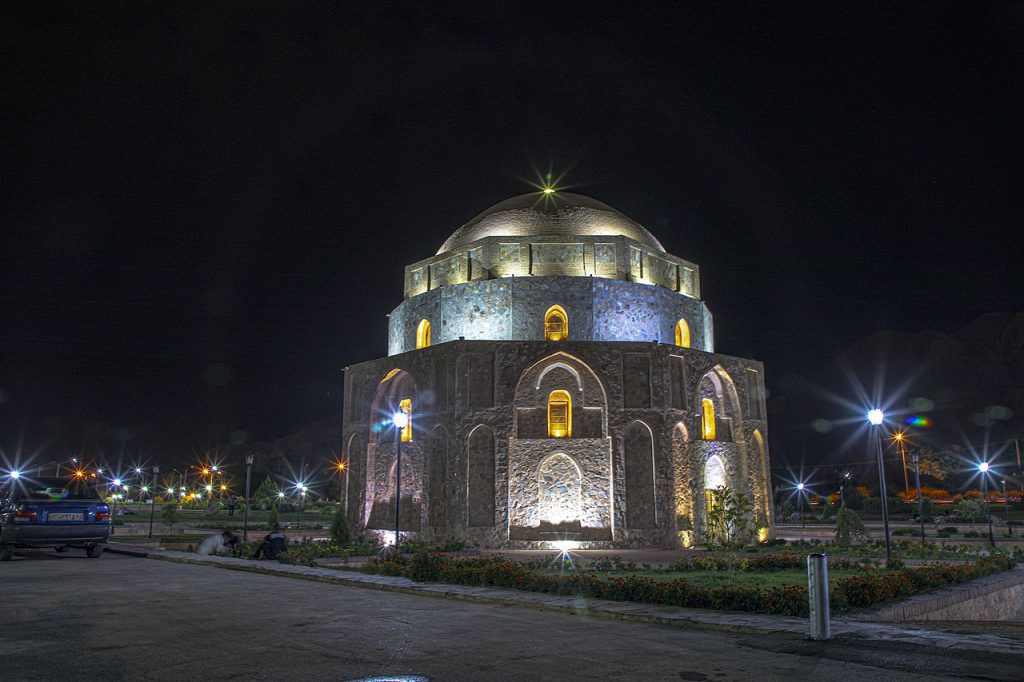
Start your adventure by heading towards the Saheb Al Zaman mountains and Zarisf Street, nestled in the eastern part of Kerman. The Jabalieh Dome, with its imposing exterior, stands ready to welcome you.
While you can explore the dome’s exterior at your leisure, as it’s open to the public, a visit to its inner sanctum requires a bit more planning. To delve into the dome’s secrets, make sure to plan your trip on a non-holiday day, allowing you to fully immerse yourself in its historical significance.
Working Hours of Jabaliyeh Dome
The Jabalieh Dome welcomes visitors with open arms, but like any esteemed host, it has a schedule.
During the warmer months, from spring to summer, the dome opens its doors at 9 am, inviting you to explore its wonders until 7 pm.
As the weather cools down in autumn and winter, the dome adjusts its hours, welcoming visitors from 8:30 am to 5 pm.
Recommended Sightseeing Time of Jabaliyeh Dome
Spring and autumn paint the most beautiful canvas for a visit to Jabaliyeh Dome.
These seasons offer a sweet spot where the weather is at its most pleasant, making it a joy to wander the city’s historic streets and soak in its rich tapestry of sights and experiences. Imagine strolling through ancient ruins under a clear blue sky, or sipping a traditional beverage in a bustling marketplace with a gentle breeze caressing your skin. These seasons truly unlock the city’s charm, allowing you to fully immerse yourself in its vibrant history and culture.
Where to Eat Near Jabaliyeh Dome
Sefto Restaurant
Sefto Restaurant offers a unique dining experience that seamlessly blends tradition with modern culinary artistry. The ambiance is a harmonious mix of classic Persian architecture and contemporary design, providing a warm and inviting atmosphere for guests. The menu features an array of traditional Iranian dishes, each crafted with fresh, locally sourced ingredients. Diners can savor the rich flavors of saffron-infused rice, tender kebabs, and a variety of seasonal vegetables, making every meal a celebration of Persian heritage.
Abouzar Restaurant
Abouzar Restaurant, located on Motahari Street in Kerman, is a well-regarded dining destination that showcases the rich flavors of Iranian cuisine. Known for its diverse menu, the restaurant offers a variety of traditional dishes that highlight the region’s culinary heritage. Guests can enjoy a selection of hearty kebabs, flavorful stews, and fragrant rice dishes, all prepared with fresh, local ingredients. The inviting atmosphere makes it a perfect spot for both casual meals and special gatherings, allowing diners to immerse themselves in the local culture while enjoying delicious food.
Where to Stay Near Jabaliyeh Dome
Shahbaz Hotel
Shahbaz Hotel, located in the heart of Kerman, offers a delightful blend of traditional Persian hospitality and modern comforts. This newly opened establishment features six uniquely designed units, each providing guests with a cozy atmosphere that reflects the rich cultural heritage of the region.
Kelyas Traditional Hotel
Nestled in the heart of Kerman, Kelyas Traditional Hotel offers a unique opportunity to immerse oneself in the rich cultural heritage of the region. This charming accommodation features traditional Persian architecture and decor, creating an authentic atmosphere for guests to experience Iranian hospitality at its finest.
Other Attractions Near Jabaliyeh Dome
Qaleh Dokhtar
Perched atop a majestic rocky outcrop, Qaleh Dokhtar, or the Girl Castle, stands as a silent guardian of Kerman’s history. This ancient fortress, with its commanding presence and sprawling 20-hectare expanse, has witnessed centuries unfold beneath its watchful gaze. Its origins trace back to a time before Islam, whispering tales of the Anahita Fire Temple that once graced its grounds. As you ascend the 400-meter-high path, you’ll be rewarded with breathtaking views of the city below, a testament to the enduring power of this historical gem.
Ardeshir Castle
Venture to the eastern edge of Kerman, where a hilltop sentinel stands as a testament to a bygone era. Ardeshir Castle, a relic of pre-Islamic times, now rests in a state of serene ruin, its weathered stones whispering tales of a forgotten past. Elevated 150 meters above the city, the castle offers panoramic views, inviting you to contemplate the lives that once unfolded within its walls. As you explore its remnants, imagine the echoes of history resonating through the air, a reminder of the enduring power of time.
Ibrahim Khan Complex
Step back in time and immerse yourself in the Ibrahim Khan Complex, a captivating ensemble of historical structures that whispers tales of Kerman’s vibrant past. This architectural masterpiece, a testament to the Qajar era, seamlessly blends a bustling market, a soothing bathhouse, a vital water reservoir, and a place of learning, all within its walls. The complex’s design, echoing the elegance of the Safavid style, invites you to wander through its courtyards and imagine the lives of those who once walked these very paths.
FAQs about Jabaliyeh Dome
Q1: Where is the Jabaliyeh Dome located?
A1: The Jabaliyeh Dome is located in the eastern part of Kerman, Iran.
Q2: What is the shape of the Jabaliyeh Dome?
A2: The Jabaliyeh Dome is octagonal in shape.
Q3: How old is the Jabaliyeh Dome?
A3: The exact age of the Jabaliyeh Dome is uncertain, but it is believed to date back to before the 2nd millennium AD.
Q4: What materials were used to build the Jabaliyeh Dome?
A4: The Jabaliyeh Dome was built using stone and brick.
Q5: What can you see inside the Jabaliyeh Dome?
A5: The interior of the Jabaliyeh Dome is empty, adding to the mystery of its purpose.
Last Words: Discover the Best of Jabaliyeh Dome with a Customized Tour
The Jabaliyeh Dome is an old, octagonal building made of stone and brick in Kerman, Iran. It’s not clear exactly what it was used for, but it might have been a Zoroastrian temple or a place for fire worship. The dome is very old, dating back to the Sassanid period, and it’s a reminder of how skilled ancient people were at building. Even though we don’t know everything about it, the dome is a fascinating piece of history, and it’s worth visiting to see its beauty and imagine what it was like in the past.
To truly appreciate the mystique and beauty of the Jabaliyeh Dome, a journey tailored to your interests is key. While you can explore Iran independently, a customized tour allows you to delve deeper into the history and culture surrounding this ancient marvel. Iran tours and travel packages often offer a glimpse into the country’s rich heritage, but a truly fulfilling experience requires a personalized approach. This is where To Iran Tour comes in. We are passionate about crafting Iran Tours that cater to your specific desires, ensuring you have an unforgettable adventure.
Let us help you unlock the secrets of the Jabaliyeh Dome and experience the magic of Iran.

